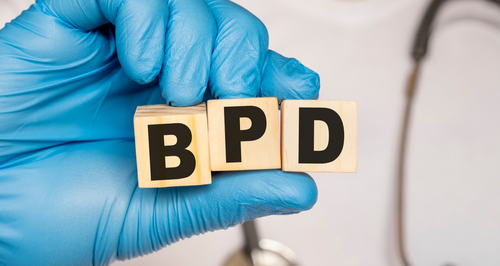
The Diagnostic and Statistical Manual of Mental Disorders, Fifth Edition (DSM-5) list ten standalone personality disorders based on similar characteristics, and each personality disorder is grouped into one of three categories (cluster A, cluster B, and cluster C). Borderline personality disorder (BPD) belongs to cluster B, which according to the Mayo Clinic are “characterized by dramatic, overly emotional or unpredictable thinking or behavior.” More specifically BPD is characterized by “a pervasive pattern of instability and hypersensitivity in interpersonal relationships, instability in self-image, extreme mood fluctuations, and impulsivity.” The symptoms associated with borderline personality disorder can pervasively interfere with an individual’s ability to function optimally in his or her daily life. Most commonly, BPD develops in early adulthood, often with more severe symptoms occurring in the early stages of onset
BPD Triggers & Risk Factors
A trigger, in the context of BPD typically refers to something that precipitates the exacerbation of one’s BPD symptoms. Johns Hopkins Medicine explains “triggers are external events or circumstances that may produce very uncomfortable emotional or psychiatric symptoms, such as anxiety, panic, discouragement, despair, or negative self-talk.” While BPD triggers can vary from person to person, there are some types of triggers that are more common in BPD, such as the following examples:
- Perceived or real abandonment
- Rejection of any kind
- Loss of a job
- Locations that invoke negative memories
- Reminders of traumatic events
- Ending a relationship
Many borderline personality disorder triggers arise from interpersonal distress. When it comes to understanding the specific cause of this disease, there is no solitary scientific reason behind why an individual develops borderline personality disorder. Rather there are several contributing factors that have been recognized as possibly playing a role in its development, potentially increasing one’s susceptibility to BPD. These factors may include, but are not limited to the following, provided by the National Institute of Mental Health:
- Genetics: people with a family history (e.g., parent, sibling, etc.) with BPD may be at increased risk of developing borderline personality disorder. Psychology Today assert that BPD is approximately five times more common among people with close biological relatives with BPD.
- Environmental factors: growing up in an unstable, neglectful, and/ or abusive environment could increase one’s risk for developing BPD.
- Brain factors: some studies have indicated that individuals diagnosed with BPD have structural and/ or functional abnormalities, specifically in the areas of the brain that reign emotional regulation and impulse control. Furthermore, deviations from typical serotonin (hormone that works to stabilize one’s mood, happiness, and feelings of well-being) production could increase one’s vulnerability to BPD.
Although the above factors may contribute to the development of BPD, exposure to one or more risk factors does not indicate an individual will inevitably to go on to develop borderline personality disorder. Since the root of borderline personality disorder remains unknown, it is impossible to isolate a single cause that accurately and universally explains its development.
The information above is provided for the use of informational purposes only. The above content is not to be substituted for professional advice, diagnosis, or treatment, as in no way is it intended as an attempt to practice medicine, give specific medical advice, including, without limitation, advice concerning the topic of mental health. As such, please do not use any material provided above to disregard professional advice or delay seeking treatment.



